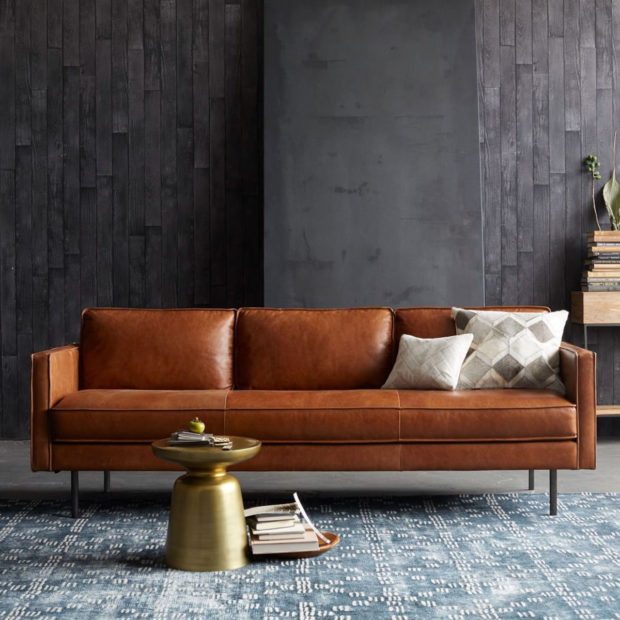The 5 Advantages of Buying Leather Furniture
Furniture comes in many shapes, sizes, and materials, so when you’re trying to find the perfect couch for your living room or a recliner to add a cozy space to your basement, it’s easy to find yourself overwhelmed. There’s no single “correct” furniture choice, since there are options for every style, budget, and household need, but some materials are more advantageous than others.


Leather furniture, for example, offers many benefits, and few downsides to speak of.
The Advantages of Leather
These are just a few of the biggest advantages of buying and owning leather furniture:
- The look. It’s hard to beat the aesthetic value of leather; walking into your living room and seeing a large leather sectional can make the entire room seem warmer and more inviting. Leather has a gentle sheen to it that makes it look pristine, and because it’s less subject to wear and tear over time, it usually has a more consistent look than material furniture of a similar nature. Leather also tends to look higher-end, so it gives an indication of higher quality.
- The ongoing care. You don’t need to do much to take care of your leather furniture. For most pieces, all you’ll need to do is apply a leather conditioning agent every 6 to 12 months—a process that should only take a few minutes. Besides that, you’ll want to wipe down the leather with a damp cloth every couple of weeks or so, and if you want to give it a bit of extra shine, apply a polishing agent to it.
- Hypoallergenic nature. Leather is also better to create a hypoallergenic environment. Leather allergies aren’t a problem, and because leather is so resistant to things like dirt, dust, and animal dander, you’ll find it’s much less prohibitive to people with allergies. By contrast, fabric couches and chairs tend to “lock in” allergenic materials, making it difficult, if not impossible to create a comfortable environment for those who suffer allergies.
- Liquid resistance. If you spill a glass of wine on a fabric couch, you’ll have a difficult time cleaning it up. You may be able to absorb some of the liquid with a towel, and get even more of it out with a wet/dry vacuum, but no matter how quickly you respond to the problem, or which cleaning methods you use, you’re almost guaranteed to be unable to get it all out. By contrast, leather is extremely resistant to liquids; the surface of the furniture would repel the wine (or any other liquid), allowing you to wipe it up easily with no long-term damage to the piece.
- Durability. As long as you take care of it properly, a piece of leather furniture can last a lifetime. As long as you condition it properly, the leather won’t wear down like fabric tends to, and the surface of the furniture is more resistant to dents and other forms of wear. Leather is vulnerable to cutting and tearing, but only under deliberate and rare conditions. Overall, leather is much more durable than other materials.
Are There Any Downsides?
That said, there are a few downsides to leather as well:
- The feel. Some people simply don’t like the feel of a leather sofa. In certain situations, leather has a tendency to stick to skin, and for some people, the subjective experience of being in contact with leather is unpleasant. If this sounds like you, it may be better to stick with fabric-based furniture.
- The cost. In many cases, the added benefits of leather also come with a higher cost. For two pieces of furniture of similar build and quality, you can expect the leather piece to be more expensive than the fabric piece. The lifelong durability and advantages of leather furniture make the extra costs worth it, but it may not be in everyone’s budget.
- The options. You do have lots of options when it comes to leather, including grades of quality, colors, and finishing. However, your leather options may pale in comparison to the options you have with fabric and other materials.
Leather is one of the most versatile and most effective long-term choices you can make for your home, and it can fit into almost any room. Deciding which piece of furniture to go with is a major investment, so weigh your options carefully, and make sure you try out multiple varieties to learn which you prefer best.